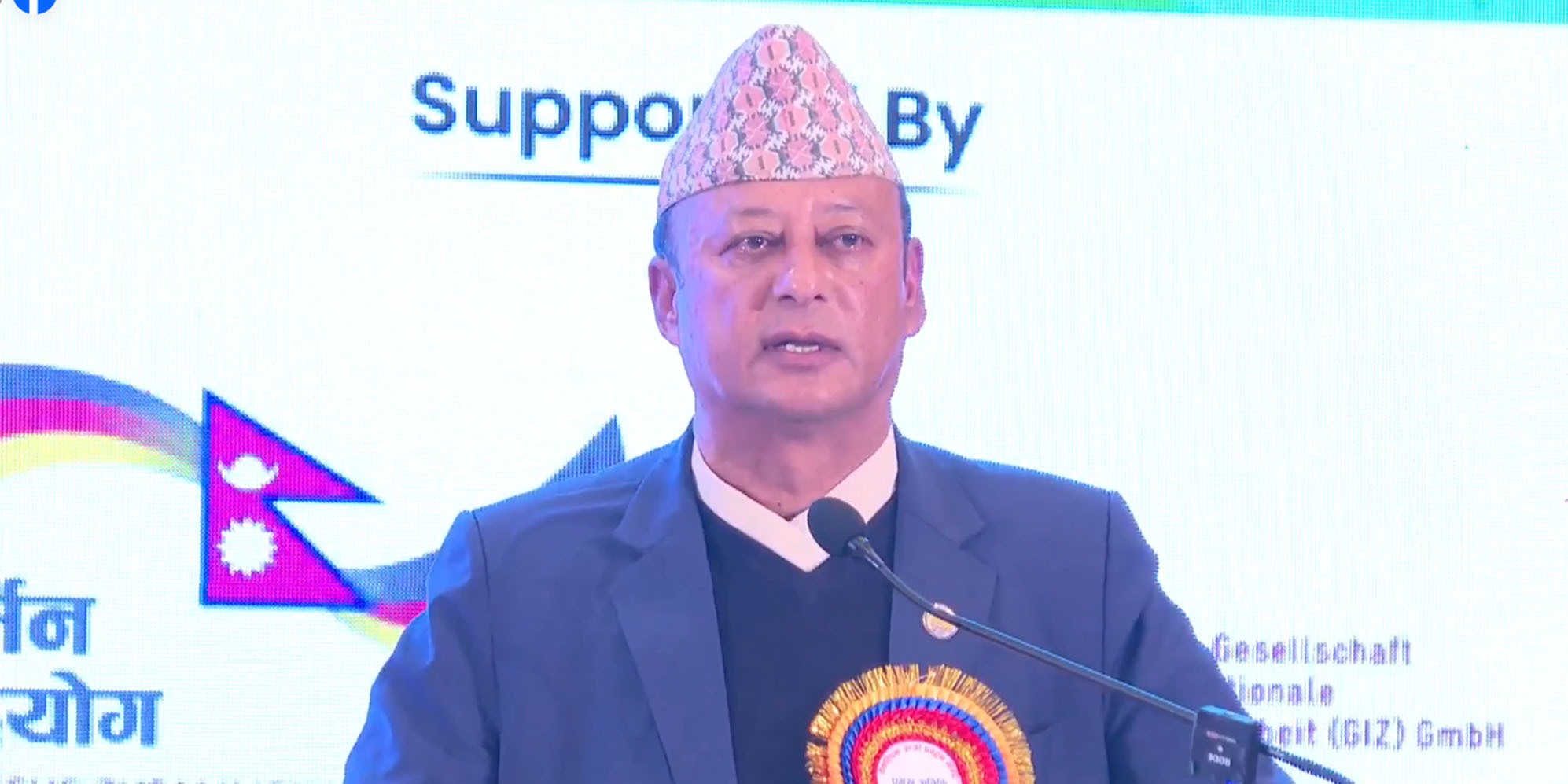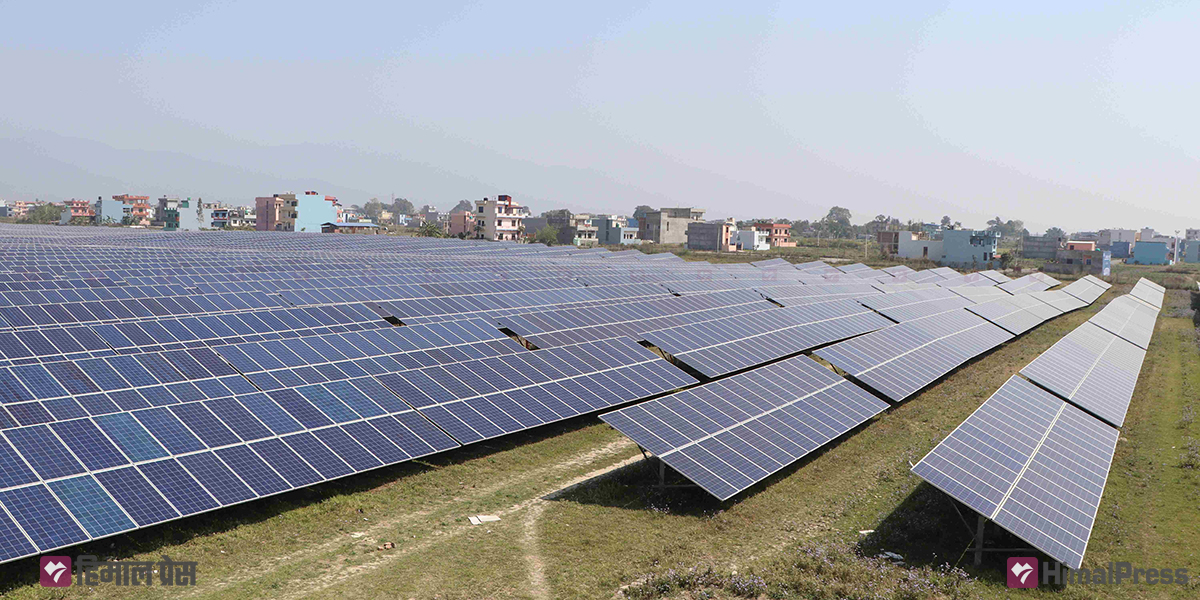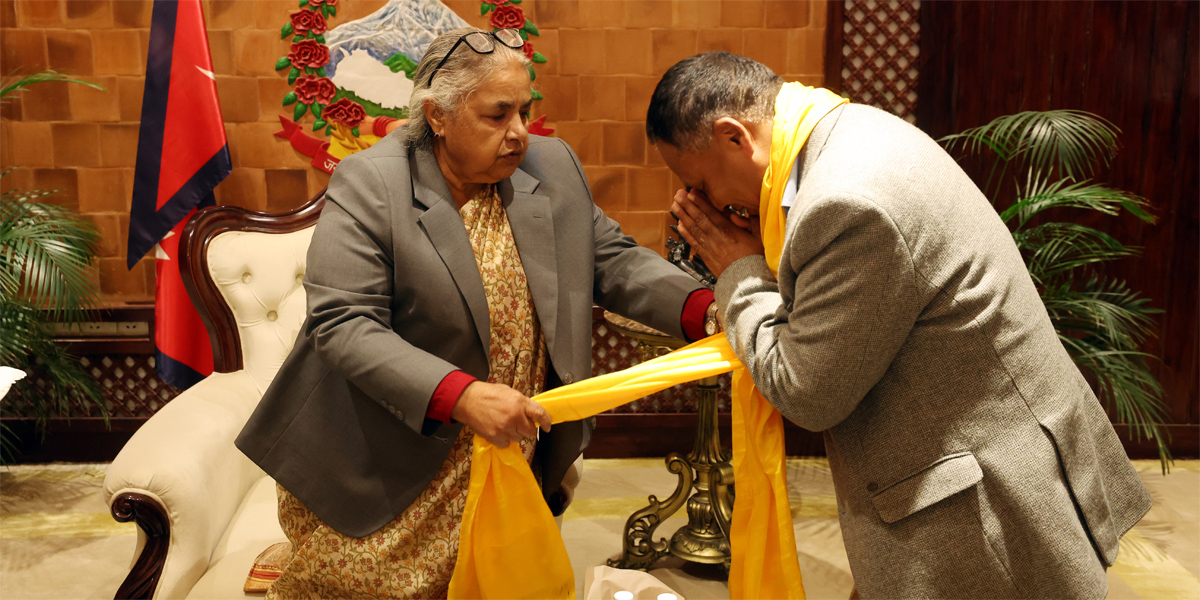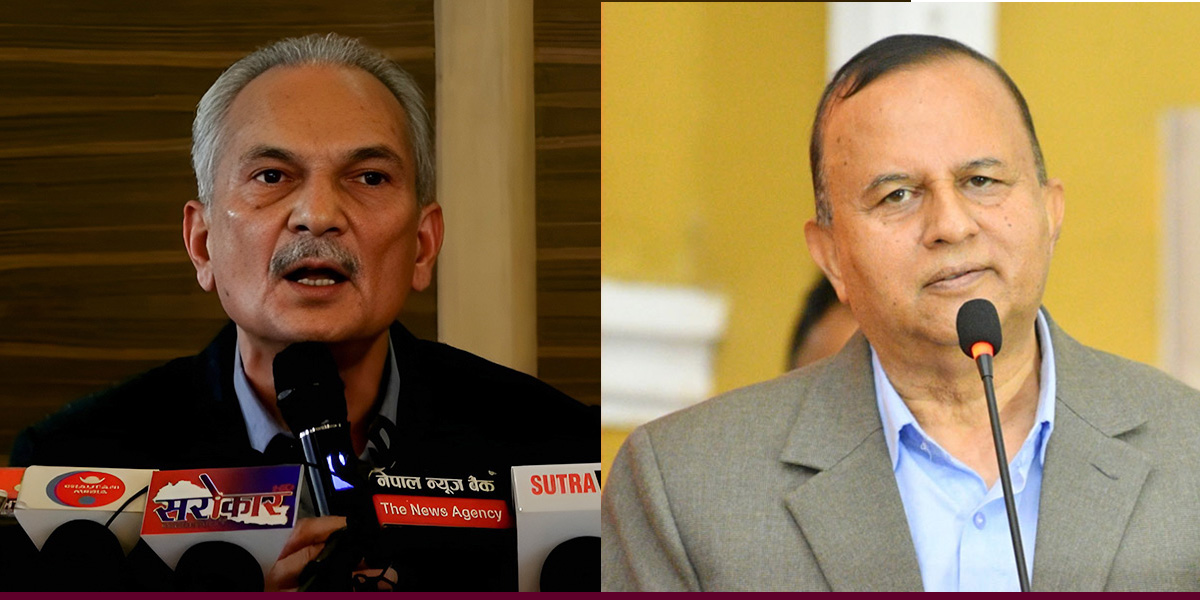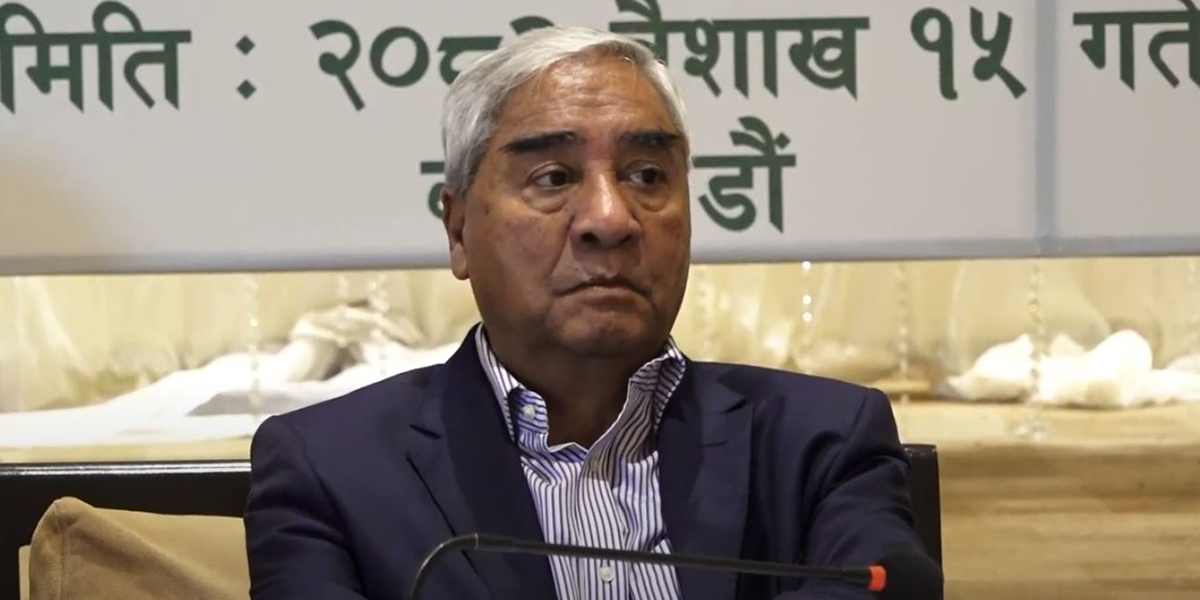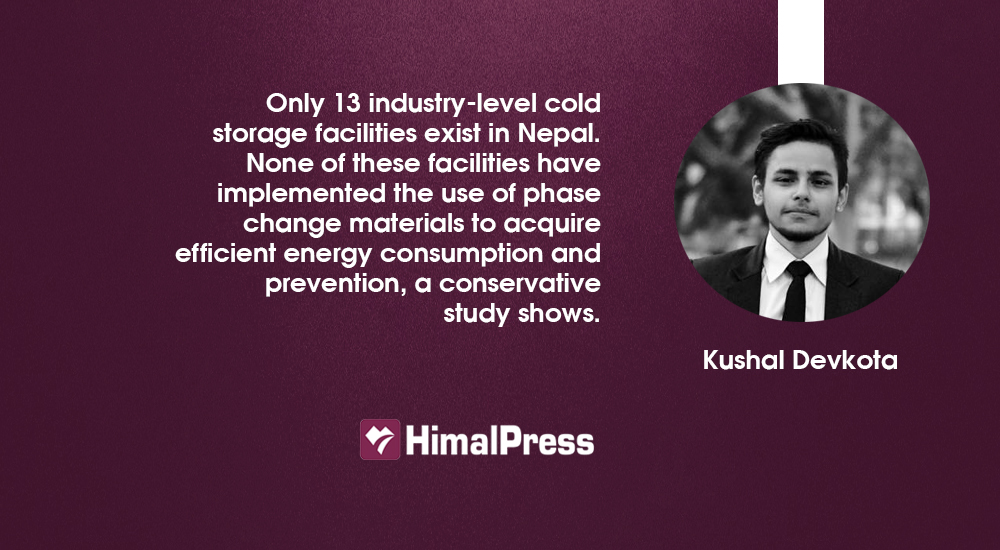
By Kushal Devkota
Energy has become a major source of existence in today’s globalized world. Global energy demand rose by 2.3% in 2018 – the fastest pace in the last decade. Continuous rise in the level of greenhouse gas emissions and the increment in fuel prices are the main driving forces behind efforts to come up with various sources of renewable energy. Scientists all over the world are in search of new and renewable energy sources. The most convenient and existential sources of renewable energy at the moment are solar energy, wind energy, tidal energy and geothermal energy, among others. However, due to many limitations and circumstances, these energy sources cannot be used in all the required places. Hence, this gives a rise to a newer perspective, that is, energy storage.
A suitable form of energy storage, and the conversion to the required form when in need is a present-day challenge to technologists. Energy storage reduces the mismatch between supply and demand and also enhances the performance and reliability of energy systems. The usage of Phase Change Materials (PCMs) for energy storage is one of the effective prospects. The use of a latent heat storage system using PCMs has the advantages of high-energy storage density and the isothermal nature of the storage process. The uses of PCMs in heating and cooling applications for buildings have been investigated within the past decade. The melting and solidifying temperatures of the PCM is spread over a wide range, depending upon the type of the PCMs
Thermal energy storage (TES) becomes important when heat demand and production do not match. TES is the temporary storage of heat energy and can be used for high or low temperatures. In TES storage, a medium is heated (charging period) and the stored heat is released during the discharging period whenever required. This balances the energy mismatch between the systems and is also a very efficient energy storage system. Current applications include thermal energy storage in buildings; solar applications such as concentrated solar power plants, solar tower power plants cooking, solar water boilers, air heating systems etc.
In latent heat storage (LHS), a phase change occurs between solid and liquid or liquid and gas due to the heat absorption and release by the storage material. LHS devices are advantageous because they have high energy storage density. Also, they can store heat at a constant temperature.
Solid to solid, solid to gas, solid to liquid and liquid to gas are the phase transitions that occur in the LHS system. But only the phase change between solid to liquid is used for LHS. Although liquid to gas phase transitions have high latent heat of transformation than solid to liquid, such LHS systems are impractical due to the large volumes and pressures involved to store the energy. Likewise, solid to solid phase transitions are not preferred as LHS devices because the phase transition is generally slower and possesses a low value of latent heat of transformation. Hence, solid to liquid phase change is used for LHS.
Latent energy storage systems deal with the phase change of a material. LHS system with solid to liquid phase change is considered to be the most efficient for use. A number of materials are found suitable for this as they melt with a moderate to high heat of fusion. Selection of PCM for a given application requires proper examination of the properties of the substance or mixture. Thus, improving the thermal conductivity enhances the energy storage efficiency by improving its charging and discharging processes.
A phase change material (PCM) is a substance with a high heat of fusion which, melting and solidifying at a certain temperature, is capable of storing and releasing large amounts of energy. Heat is absorbed or released when the material changes from solid to liquid and vice versa. Thus, PCMs are classified as latent heat storage units. Three types of phase changes can happen in a material – solid to liquid phase change, solid to gas phase change and liquid to gas phase change. Generally, solid to gas phase change and liquid to gas phase change involves a large amount of volume change. Hence, solid to liquid phase change is the most preferred mode of latent heat storage.
Organic materials can freeze and melt repeatedly without any phase segregation and are non-corrosive in nature. Paraffin and non-paraffin compounds are limited to use due to their low and moderate temperatures. High heat of fusion, low thermal conductivity, instability at high temperature, etc are some of the properties of these groups of materials.
Finding a suitable organic phase change material for thermal energy storage applications is pivotal in our quest to scathe energy conservation with increasing energy demand in Nepal, triggered by urbanization, technical progress and increasing industrial sector.
Eutectic compounds are formed by a combination of two or more components. They form a mixture of the components during their crystallization. Also, the chance for the reversible process is very minimum. Depending on the composition, eutectics can be divided into organic and organic, inorganic and inorganic, and inorganic and organic mixtures. Low temperature PCMs are used in buildings and waste heat recovery systems. High temperature PCMs are used in solar power generation plants and other similar high temperature applications. Selection of a suitable PCM material for application is dependent on its thermal, physical and chemical. and in most cases economical properties too.
Scenario in Nepal
Renewable energy comes one step closer to a large-scale energy production with advancements in innovative energy storage technologies. Thermal energy storage helps to increase the energy efficiency of the system. Moreover, it also acts as a bridge to compensate the mismatch between the existing demand and supply of energy. Finding a suitable organic phase change material for thermal energy storage applications is pivotal in our quest to scathe energy conservation with increasing energy demand in Nepal, triggered by urbanization, technical progress and increasing industrial sector. The tourism sector is an important sector for Nepal to generate revenue and foreign exchange. According to the Nepal Tourism Statistics 2020 made public by the Ministry of Culture, Tourism and Civil Aviation, there are 142 star-rated hotels and an estimated 1,171 tourist hotels in Nepal. As the country has 18 five-star hotels, the requirement for cold food preservation facilities is crucial in the hospitality sector.
With a fair portion of refrigeration and air conditioning industry still based on traditional and elementary standard of practice, implementation of latest studies in real-time scenario is a far-fetched idea.
As the number of hotels in Nepal grows, energy analysis for consumption as well as preservation is required. Since only five-star and similar hotels find it feasible to establish a dedicated cold storage room for food storage, other hotels are obliged to use private facilities. According to Business Directory of Nepal, only 13 industry-level cold storage facilities exist in Nepal. None of these facilities have implemented the use of phase change materials to acquire efficient energy consumption and prevention, a conservative study shows.
In an effort to overcome the lack of practice in this particular field, the need for the development of experiments and trials customizable to the local context and its application to Nepal – a developing country with a very high need of energy segregation and planning to suffice for the possible future energy sustainably – is the need of the hour.
(The author is a mechanical engineer and energy Technologist)

 Himal Press
Himal Press 

